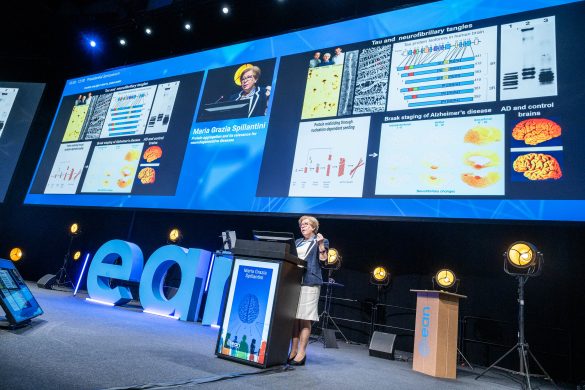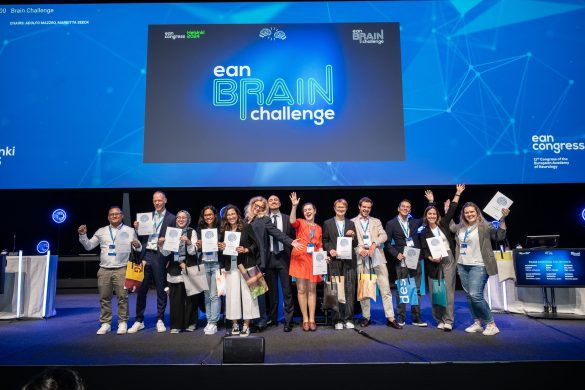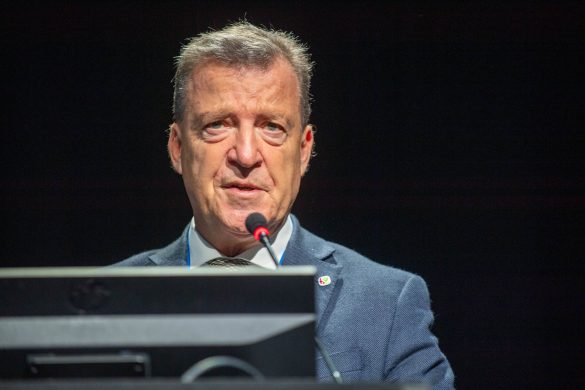by Elena Moro
For February 2019, we have selected: Cooper DJ, Nichol AD, Balley M, et al. for the POLAR Trial Investigators and the ANZICS Clinical Trial Group. Effect of early sustained prophylactic hypothermia on neurologic outcomes among patients with severe traumatic brain injury. JAMA 2018;320:2211-2220.
Over the last years, findings concerning the use of prophylactic hypothermia to improve clinical outcomes after traumatic brain injury have been conflicting. A few meta-analyses have concluded for some beneficial effects from hypothermia, including decreased mortality, whereas four randomized clinical trials did not report any benefit.
In this multinational randomized clinical trial (POLAR-RCT), the authors assessed the effects of early prophylactic hypothermia (33°C – 35°C) applied for at least 72 hours and compared it with normothermia in patients with severe traumatic brain injury. The trial was planned to include 510 patients in six countries, and spanned from December 2010 to November 2017. Patients were screened in five out-of-hospital or paramedic agencies and in 14 emergency departments. To be included, patients had to be between 18 and 60 years old, had a Glasgow Coma Scale Score (GCSS) <9, and actual or imminent endotracheal intubation. Out-of-hospital exclusion criteria were significant bleedings with systolic hypotension and tachycardia, suspected pregnancy, GCSS =3, and unreactive pupils. Patients were randomized to prophylactic hypothermia versus controlled normothermia, with unblinded treating physician. In the hypothermia group, hypothermia (33°C ± 0.5°C) was kept for at least 72 hours using a Gaymar Meditherm 3 console with surface-cooling wraps. If hemodynamic instability presumed to bleeding, patients could be rewarmed. After 72 hours, if intracranial pressure <20 mmHg, a gradual controlled rewarming was applied up to normothermia (37°C ± 0.5°C). The maximum period of hypothermia was 7 days after randomization.
The primary outcome of this study was the percentage of favorable Glasgow-Outcome-Scale-Extended (GOS-E) score (5 to 8) from blinded raters at 6 months after injury. Secondary outcomes included mortality, proportion of patients with adverse events within 10 days of randomization, duration of mechanical ventilation, and hospital length of stay. Of the 511 patients randomized, 240 patients of the hypothermia group and 226 of the normothemia group were available for the primary outcome analyses, respectively. Overall, the mean GCSS was of 6. Around 33% of patients in the hypothermia group received <48 hours of hypothermia, whereas 27% never reached the final target of 33°C. Hypothermia was started quickly after injury (a median of 1.8 hours) and rewarming occurred slowly (a median of 22.5 hours).
At 6 months, there was no difference in the favorable outcome between groups, i.e., 117 patients (48.8%) in the hypothermia group and 111 patients (49.1%) in the normothermia group (absolute risk difference, -0.4%, 95% CI, -9.4-8.7; relative risk with hypothermia, 0.99, 95% CI, 0.82-1.19, P=0.94). There were no significant differences between groups regarding to any secondary outcome. Pneumonia and intracranial bleeding occurred in 55% and 18.1% of hypothermia patients, and in 51.3% and 15.4% of normothermia patients, respectively. However, the per-protocol analysis found increased risk of pneumonia in the hypothermia group (P=0.003).
“This is a large randomized study that further supports previous clinical findings coming from other four randomized trials conducted with different methodology”, says Prof. Maxwell Simon Damian, Department of Neurology, University of Cambridge, UK. ”These findings go against a large amount of pre-clinical evidence, and recent meta-analysis that sustained the use of hypothermia after brain traumatic injury. This trial definitely clarifies the futility of this treatment.”
“There are some limitation in this study, including the long recruitment time (seven years), the lack of blind treating physician, and of targeted hypothermia temperature (33°C) in several patients”, says Prof. Stefan Schwab, Department of Neurology, University of Erlangen, Germany. ”Nevertheless, the study was well-designed, and delivers conclusions that should be integrated in clinical practice and international guidelines.”
The other nominees for the February 2019 paper of the month are:
- GBD 2016 Parkinson’s Disease Collaborators. Global, regional, and national burden of Parkinson’s disease, 1990-2016: a systematic analysis for the Global Burden of Disease Study 2016. Lancet Neurol 2018;17;939-953. In this paper, the authors investigated the global burden of Parkinson’s disease between 1990 and 2016 using a systemic analysis of epidemiological studies. Compared to the estimation of 2.5 million of people with Parkinson’s disease worldwide in 1990, they found an increase up to 6.1 million in 2016. This increase was not solely explained by the parallel increase of older people. Disability-adjusted life-years and death ratios also increased, but not in southern Latin America, eastern Europe and Oceania.
- FOCUS Trail Collaboration. Effects of fluoxetine on functional outcomes after acute stroke (FOCUS): a pragmatic, double-blind, randomized, controlled trial. Lancet Neurol December 5, 2018. doi: 10.1016/S0140-6736(18)32823-X. The authors conducted a large multicenter, double-blinded, randomized, placebo-control trial in 3,127 UK patients with acute stroke (between 2 and 15 days after onset) with the aim to assess the effects of 20 mg fluoxetine at 6 months. Although patients with fluoxetine developed less depression compared to placebo, they had more bone fractures.
- Prasad K, Siemieniuk R, Hao Q, et al. Dual antiplatelet therapy with aspirin and clopidogrel for acute high risk transient ischaemic attack and minor ischaemic stroke: a clinical practice guideline. BMJ 2018;363:k5130 doi: 10.1136/bmj.k5130. In this experts’ opinion paper, the authors review the evidence and provide recommendation about the use of dual antiplatelet therapy (aspirin and clopidogrel) soon after TIA and minor ischaemic stroke.
Prof. Elena Moro is Editor in Chief of EAN Pages and treasurer of EAN as well as Director of the Movement Disorders Center at the Centre Hospital Universitaire (CHU) of Grenoble, France and the Associate Director of the CHU Department of Psychiatry, Neurology and Rehabilitation.














